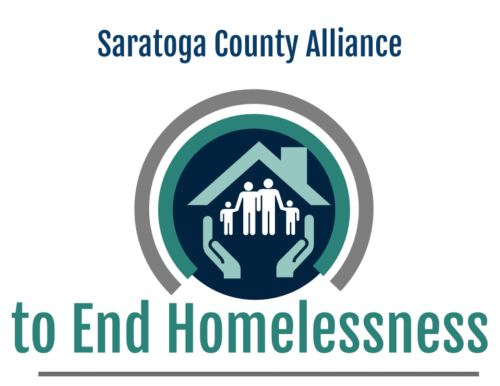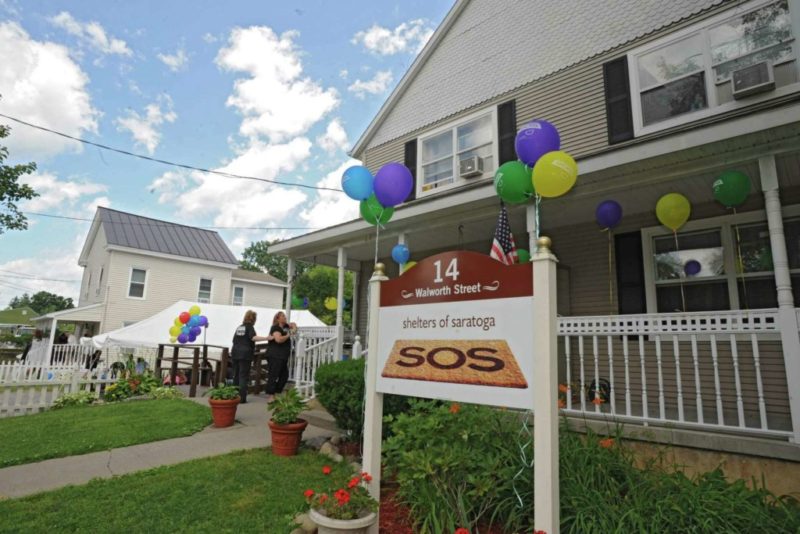
The Saratoga County Alliance to End Homelessness contributed this article that was posted in the Times Union, Saratoga Springs Creates Collaborative to Address Homelessness
Experts agree, the solutions to ending homelessness are simple: provide more affordable housing and prevent people from losing their homes in the first place by supporting those struggling to pay their rent.
But unfortunately, national homelessness consultant Erin Healy said many communities, including Saratoga Springs, are locked in a broken cycle that doesn’t lift people out of homelessness, rather it keeps them there.

“A lot of systems are stalled in the 1980s vision of emergency shelter,” Healy said as a new local coalition works to tackle the problem. “That was a crisis response that by default became the system. Now we are trying to define a system that’s output is getting people housed. Right now, we have a system that produces homelessness.”
The executive director of the Shelters of Saratoga, which manages the Code Blue, the overnight emergency winter shelter, agreed.
“We need to work together as a community to think differently and move away from Band-Aid approaches to the ultimate solutions around homelessness, which are prevention and housing,” SOS Executive Director Karen Gregory said.
That’s why SOS and the Presbyterian New England Congregational Church have formed the Saratoga Collaborative to End Homeless. The group will be facilitated by Healy, a Spa City native now based in New York City, who has worked on successful national efforts to end homelessness. These include the ongoing Built for Zero effort, a program where 85 communities are striving to achieve “functional zero” in their homeless population, and the 100,000 Homes Campaign, which housed more than 100,000 of the nation’s most vulnerable homeless from 2010-2014.
In addition to SOS and PNECC, the local collaborative will take input from other organizations that serve the homeless including Captain Youth and Family Services and the United Way as well as Saratoga Spring police, individual donors and volunteers.
The collaborative’s launch coincides with Thursday’s Saratoga County-North Country’s Point in Time count of the homeless population, which last year estimated that there were 268 homeless people in Saratoga, Warren, Washington and Hamilton counties. That’s up from 2018’s count of 257.
While Healy said the solutions are simple, implementing them is complex. She said the main roadblock is the NIMBY or not-in-my-backyard factor – those who fear their home values will plummet if their neighborhood includes affordable housing and those who generally fear the homeless population. In September 2018 a group of neighbors on Walworth Street legally blocked a permanent Code Blue shelter from being built there, and neighbors near PNECC blocked a temporary shelter last spring.
“Anything that hints of low income, people are just worried,” Healy said. “What kind of people will be housed and who is worthy of housing? It’s fear. You are going to always have resistance. You can’t stay frozen in the NIMBY space.”
The city landed in this situation, Healy said, here because “Saratoga is successful. With gentrification, comes homelessness.” Success also brings rent hikes.
She noted that since 2014 rents in Saratoga Springs have increased by 78 percent for a one bedroom and 60 percent for a two bedroom. Moreover, the Economic Policy Institute lists Saratoga County as No. 3 in income inequality in the state and No. 28 in the nation, with the largest gap between rich and poor.
To overcome the gap, Healy said the city will need to invest in its agencies that support the homeless — with staff and funds for programs. She also said it’s necessary to have a safe space for the homeless to go during the day − a place where they can connect with services that fulfill social, emotional and medical health.
“Without that, people will be upset that they are marching through downtown, sitting on people’s lawn and using public areas as bathrooms,” Healy said. “Not everyone is going to be happy with the solution. But I think most people will be pleasantly surprised.”
She also said that only 20 percent are in need of mental health or addiction services and that a majority of the homeless simply can’t afford rent. However, she said, those with mental health and addiction issues are among the most visible, leading to the misconception of who is homeless.
She knows that resistance to affordable housing in all neighborhoods is a given. That is why, she said, it’s it is key to tap into the “coalition of the willing.”
Learn more at The Saratoga County Alliance to End Homelessness Website.
RISE is proud to be a participating agency in the Saratoga County Alliance to End Homelessness.
